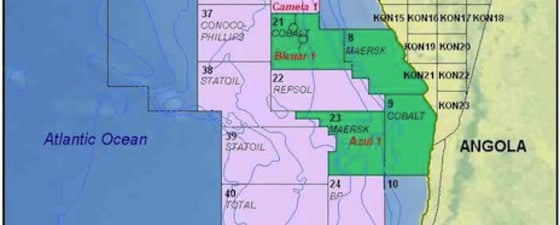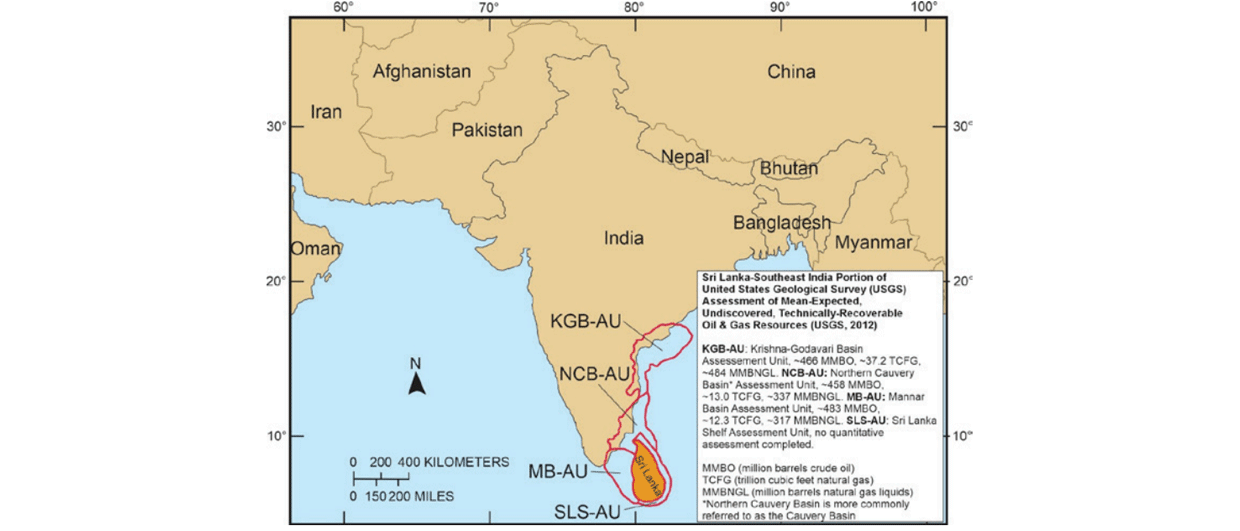Since the discovery of the Girassol field by Elf in 1996, most deepwater exploration in Angola has focussed on post-salt Tertiary fans in the Lower Congo Basin. The application of modern seismic imaging has meant that nearly four out of five exploratory wells drilled in 2009-2010 were successful and two-thirds of Angola’s oil production is derived from deepwater fields.
The pre-salt plays off Brazil have generated some of the largest discoveries in recent history, with over 14 Bboe found since 2007, and the US Geological Survey has estimated that pre-salt formations in Angola could contain up to 30 Bbo, equivalent to the resources of Nigeria or Qatar.
The National Oil Company, Sociedade Nacional de Combustíveis de Angola (Sonangol) has been working in conjunction with Petrobras to gain a better understanding and promote the pre-salt potential and in January 2011, Carlos Saturnino, Sonangol’s Director of Negotiations, stated that exploration in Angola was entering a new phase which will require greater investment and have greater technological complexities.
Potential On and Offshore
Unlike the pre-salt basins of Brazil, which lie offshore, around 20% (25,000 km2) of the Kwanza Basin lies onshore, although the prospective sub-salt formations can lie around 4,000m below ground level onshore and are even deeper offshore. There has been no active exploration in the onshore area for over 20-years, but there is still the potential for new discoveries in this proven oil producing region.
The risks in deepwater areas are greater and the accumulation of high quality modern seismic data with leading edge processing/velocity modeling is becoming critical to accurately identifying leads and prospects. The nature of the salt is a primary control and varies across the Kwanza Basin. Blocks 36-40 appear to have thicker but shallower salt horizons, whilst inboard of Blocks 19-24, thick diapiric salts appear to be more common. Extensional rift tectonics dominate in the pre-salt section, with a fault induced relief that exhibits both tilted and folded sections. Potential pre-salt plays could include tilted fault blocks with sands and carbonate mounds providing potential reservoirs for oil sourced from adjacent lacustrine shales.
BP successfully used conventional narrow-azimuth 3D seismic data to identify many of its five pre-salt discoveries on Block 31 in the Lower Congo Basin and in 2008-2009 shot the first wide-azimuth towed streamer (WATS) seismic survey outside the Gulf of Mexico over the western part of the block to refine its model and provide data with sufficient resolution for the appraisal and development of sub-salt discoveries.
Ongoing Exploration
Relatively few wells have been drilled offshore Kwanza Basin and many of the historical wells were apparently drilled off structure. Drilling operations, however, are ongoing. Maersk is thought to have spudded exploration well Azul 1 on Block 23 in the southern Kwanza Basin in June 2011, with a pre-salt target over 5,000m deep. Cobalt Energy International spudded and then abandoned its first well (Bicaur 1) on Block 21, after encountering an overpressured water sand, with limited quantities of natural gas. It is reviewing its shallow drilling hazards before either spudding a new well, Cameia 1, or returning to a location near Bicaur 1. Further south, Petrobras is planning to drill its first pre-salt wildcat in the Benguela Basin on Block 26 in Q3/Q4 2011 to investigate the deepwater Ogonga prospect. BP is understood to have released a deepwater drilling rig for the well and may farm into the block.
On the northern margins of the basin, Vaalco may also drill an exploration well on Block 5 during the second half of 2011. The US based independent has identified many prospects and leads with up to 350 MMboe of recoverable resources in multiple plays, including pre-salt opportunities.
Sonangol remains committed to exploring the pre-salt and frontier plays and continues to gather data across all open areas in Angola. The next licensing round is not expected before 2012 and is will probably comprise open areas both onshore and offshore Kwanza, as well as areas in the Benguela and Namibe Basins.





